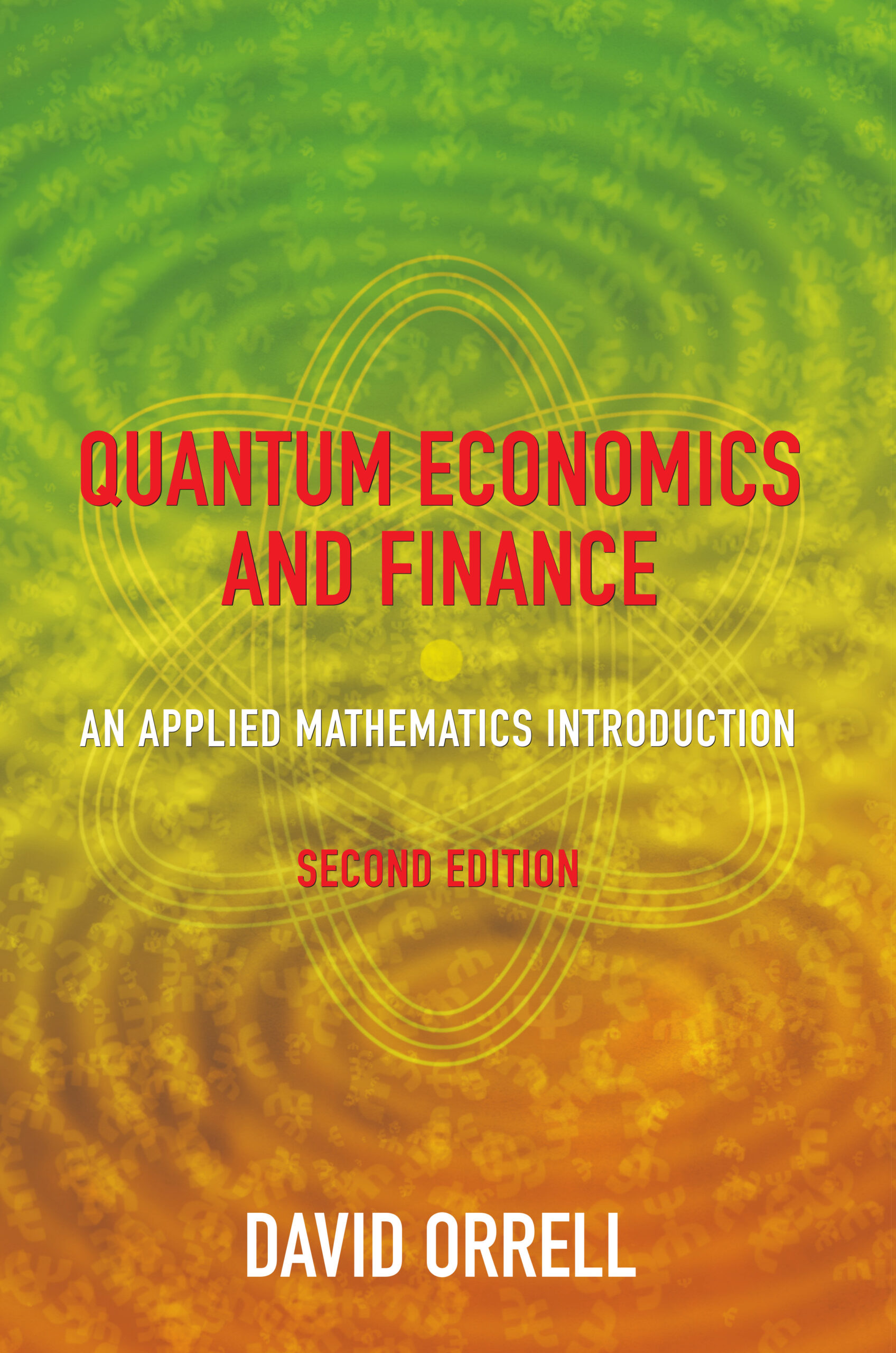The word “quantum” is from the Latin for “how much” and in this book mathematician David Orrell shows how it applies to the world of economic transactions. Written in clear and accessible language, the book covers the essential mathematics behind topics including quantum cognition, option pricing, and quantum game theory, and delves into the nuts and bolts of quantum mechanics, the principles of quantum economic modelling, and the basics of quantum computer logic. On the way the reader will learn how quantum interference can be used to model cognitive dissonance, how a quantum walk goes further than a random walk, and how financial entanglement explains the rate of mortgage default. It is aimed at anyone who wants to understand the quantum ideas working their way into economics and finance, without getting drowned in wave equations.
As interest in quantum computing grows, many companies from established banks to startups are looking at ways to perform financial simulations using quantum algorithms. But what if we should be using quantum models anyway – because the monetary system has quantum properties of its own, and because they work?
The field is developing rapidly, and this second edition contains many updates including new material on quantum logic and quantum agent-based models, and a guest chapter from Ramy Aboushelbaya and Marko Mayr of Quantum Dice on quantum hardware
David Orrell is an applied mathematician with extensive experience in mathematical modelling, and the author of a dozen books on science and economics.
CONTENTS OF THE SECOND EDITION
Introduction 1
1 Why quantum? 9
1.1 Not so strange 10
1.2 A quantum of value 11
1.3 Transactions as a measurement process 12
1.4 Entanglements 13
1.5 Money creation 15
1.6 Quantum economic person 16
1.7 Dynamics 18
1.8 How much 18
1.9 Summary 21
1.10 Further reading 21
2 Some basics 25
2.1 The Hilbert space 25
2.2 Quantum measurements 27
2.3 Example: a binary decision 28
2.4 Entropic force 30
2.5 Projection sequences 31
2.6 The quarter law 33
2.7 Density matrix 34
2.8 Quantum coin 35
2.9 Complications 37
2.10 Summary 38
2.11 Further reading 38
3 Quantum propensity 41
3.1 Expected utility theory 41
3.2 Behavioural economics 43
3.3 The sure thing effect 45
3.4 The unsure thing effect 46
3.5 Loss aversion 47
3.6 Ellsberg paradox 48
3.7 Allais effect 49
3.8 Summary 50
3.9 Further reading 51
4 Mental interference 53
4.1 Framing events 53
4.2 Wave splitter 54
4.3 The disjunction effect 55
4.4 Projection sequence 57
4.5 The attraction function 58
4.6 The conjunction effect 60
4.7 The order effect 60
4.8 Clinton and Gore 62
4.9 Summary 63
5 Computing in colour 65
5.1 Qubits 66
5.2 Basic logic gates 67
5.3 Gates on multiple qubits 68
5.4 Circuit representation 70
5.5 Example: An entanglement circuit 72
5.6 Example: The quantum walk 74
5.7 Example: Quantum learning 75
5.8 Quantum programming 76
5.9 Summary 76
5.10 Further reading 77
6 The quantum walk 79
6.1 Background 79
6.2 The classical random walk 80
6.3 The quantum version 81
6.4 Quantum diffusion 85
6.5 Decoherence 86
6.6 Applications 87
6.7 Summary 89
7 Option pricing 91
7.1 Walking the line 92
7.2 Quantum fluctuations 93
7.3 The binomial model 94
7.4 Pricing options 96
7.5 Quantum anomalies 96
7.6 Model with two assets 101
7.7 Discussion 103
7.8 Summary 104
8 Quantum games 105
8.1 The penny flip 106
8.2 The prisoner’s dilemma 108
8.3 Quantum rules 109
8.4 Entangled prisoners 111
8.5 The projection game 115
8.6 Summary 117
9 Quantum oscillations 119
9.1 Background 120
9.2 Quantize this 121
9.3 The harmonic oscillator 123
9.4 Creation and annihilation 126
9.5 Coherent state 128
9.6 Dynamics 129
9.7 Discussion 130
9.8 Summary 131
9.9 Further reading 132
10 Probabilistic supply and demand 133
10.1 Background 133
10.2 Case with single buyer and seller 134
10.3 Market makers 136
10.4 Multiple agents 137
10.5 Effects on price flexibility 139
10.6 Entropic force interpretation 140
10.7 The entropic oscillator 141
10.8 Discussion 144
10.9 Summary 144
10.10Further reading 145
11 Quantized supply and demand 147
11.1 The quantum financial oscillator 148
11.2 Quantum mass 149
11.3 Quantum versus classical 150
11.4 Information exchange 153
11.5 Applications 154
11.6 Summary 155
11.7 Tables 156
12 The quantum market 159
12.1 Financial bosons 159
12.2 Monetary exchange 160
12.3 Cash flow 162
12.4 Quantum (in)security 163
12.5 The colour of money 164
12.6 Discussion 165
12.7 Summary 167
12.8 Further reading 167
13 Entanglements 169
13.1 Preference reversal 170
13.2 Mortgage default 172
13.3 A quantum of debt 174
13.4 Social entanglement 175
13.5 Financial entanglement 176
13.6 Entanglement versus correlation 178
13.7 Derivatives 179
13.8 Discussion 180
13.9 Summary 181
13.10Further reading 182
14 Building quantum models 183
14.1 Principles for modelling 184
14.2 Probabilistic transactions 185
14.3 Production and consumption 188
14.4 Option pricing with supply and demand 189
14.5 Quantum agent-based models 193
14.6 New foundations 196
14.7 Summary 197
15 Quantum gateway 199
15.1 The will is our pendulum 199
15.2 A new operating system 201
15.3 Shut up and calculate 202
15.4 Reasons to be quantum 204
15.5 The prediction test 205
15.6 Quantum by another name 208
15.7 Quantum calculation 210
16 The practicalities of quantum hardware 213
16.1 Quantum insecurity 213
16.2 The current state of quantum hardware 214
16.3 A look into the (near) future 218
Bibliography 221
Index 233
